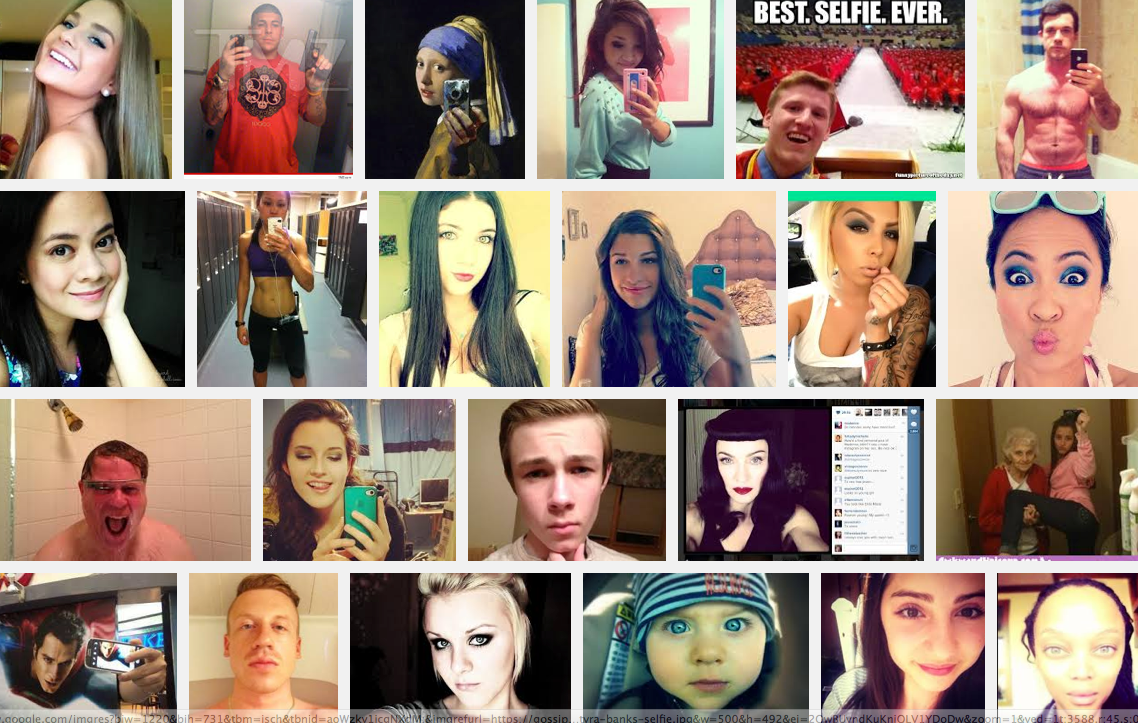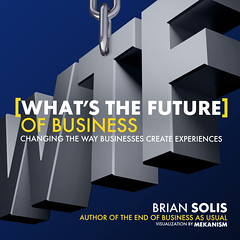Have you ever noticed that your Facebook News Feed is the digital equivalent to “It’s a Wonderful Life?” Perhaps you’ve likened your Instagram stream to that of “Lifestyles of the Digital Rich and Internet Famous.”
In each network, and across multiple social streams, you’re fed a visual buffet of seflies, travel, food, fashion, and celebrations. In assemblage, they tell the story of life well lived, or at least a life well curated. At the center of each of these experiences is the person living and sharing them in real time. Every day that passes, it seems that a growing network of our friends, family, and colleagues are charmed with this picturesque life.
Some may see this behavior as self-centered, self-promotional, or view it as a form of attention seeking, but at a human level, it’s simply a new form of self-expression and an open invitation to interact.
But who are we kidding? It’s not just everyone else, we might as well be talking about ourselves. It’s a social world after all and shared experiences are the epicenter of a growing majority of engagement. As such, we’re introduced to a new law of social physics, if you will, where for every action there is an equal or greater reaction. The truth is that social sharing is part self-expression and also part provocation. People share to communicate who they are or who they want to be, while concurrently hoping to incite a reaction that validates or substantiates their intended online persona.
This phenomenon may seem like a personal discussion, but I can assure you that it has everything to do with your business.
I’d like to officially introduce you to your connected customer. I believe it’s about time we get to know the connected set to better understand how to engage them in social and mobile networks now and throughout the entire customer lifecycle.
It’s all about you and me…but mostly me
If you’re reading this, then you’re most likely the very person you’re trying to reach. You’re connected, always on, unabashedly multitasking, and living across multiple screens each and every day. You live a digital lifestyle and without realizing it, you and others like you, are gradually exhibiting slivers of narcissism. Believe me, I say this with the utmost discretion. You can’t help it of course. These networks prompt you to share your world, your way, all day, every day. And each time we do, we contribute to our “egosystem,” where we are the center of our own digital universe. Experiences and engagement represent the orbits that bring us together.
Let’s visit planet Facebook and its orbiting moon Instagram for a moment. Facebook is now home to over one billion digital denizens. To put that in perspective, that’s roughly about 12 percent of planet Earth. Instagram is a fledgling digital society in its own right. At 100 million residents and counting, a culture of sharing one’s experiences is further enhanced by the ability to instantly enhance them with a creative filter, broadcast them across multiple networks, and earn the attention and reaction of a boundless and seemingly idle audience.
The question is, if everyone is busy sharing content, then who is consuming it? This is also the law of social attraction. It’s a reciprocal relationship where to earn reactions, one must equally or progressively react. How do you do that if the real-time web moves in real-time?
The age of prevalence
Understanding digital behavior has never known greater importance. As it evolves, we need to appreciate its velocity and impact. For example, on Facebook, conversations lose momentum in an hour, give or take. The reason for this is because people consume until they create. As they create, expectations shift as characteristics of narcissism take over. What about Instagram? Allow me to share some revealing behavioral stats that will make you say “Wow.”
Statigram is a third-party tool that tracks activity on Instagram. According to a fascinating article in pdn (Photo District News) written by Kathleen Hay, Statigram tracked the number of photos tagged “selfie,” social slang for self-portrait (yes, that’s a thing.) At 11 p.m. PST on December 28, 2012, the number of selfies numbered at a noteworthy 5.5 million. The egosystem wouldn’t be the same without the “me” in social media. At the same time, photos tagged ‘me’ completely eclipsed “selfie” with a staggering 72.6 million self-portraits. Added together, you start to get the picture of just how prominent the egosystem is becoming.
In the article, Hay introduces us to Dr. Jean M. Twenge, Ph.D. Professor of Psychology and author of Generation Me and co-author of The Narcissism Epidemic: Living in the Age of Entitlement. The titles alone convey that connected consumerism is nothing like the conventional customers you once knew. To better understand the crux of selfies and the digital “me,” Twenge explains that at the core of narcissism is this invention or aspiration that people are better or more important than in reality. In the digital realm however, perception is reality.
Agree or disagree, this is your connected customer. And in many ways, you and those you know are among them.
How can you re-imagine your engagement strategies to align with and inspire the “me” in social media? How does — or how can — your brand evoke an experience that elicits self-expression? And how will your brand become part of the egosystem and create a gravitational pull for others to orbit?
Connect with me: Twitter | LinkedIn | Facebook | Google+ |Youtube | Instagram







Brian,
Great article that puts social media in perspective for me. I don’t happen to be the multi-tasking type person you talk about, but I’m fascinated by the behavior.
You got me laughing about the “me” in social media, how appropriate! Also, when you talk about gravitational pull in relationship to a brand I can see it in my minds eye.
Your posts are always thought provoking – thanks again.
Thank you Steve. Always appreciate hearing from you…
Much food for thought, and an education, Brian… as usual. Thank you! Having read Prof. Twenge’s Generation Me, I’ll now add The Narcissim Experiment to my to read list. Must say that the visual….including “Girl With The Pearl Earring” was eye-catching.
You are right, dear mr.Professor Solis, and that is why I gave up FACEBOOK many years ago. Contrary to that, I’m very concerned about the information in general, as the world have started to become more and more stupid and not-educated, day after day, and being a Social person does not mean ‘to be able managing all sorts of public circumstances), but it rather is ‘having a FB account’. Contrary to these, what could you do when you are not permitted to control your privacy, and there are always persons/or politicians/employees with a private interest to use your name and old photos, in order to create fake on-line accounts, in your name?
I have noticed a recent trend of apps that cater toward to consumer narcissism. One app that comes to mind is SnapMyAd. Users can earn rewards for posting pictures associated with brands. It seems like an interesting concept that caters to consumer narcissism.
Your last three questions are incredibly thought-provoking. I have to admit, at first I was thinking, “I’m not sure how much this relates to me in a B2B context,” but then I stopped myself. The reality is that these are or will be my customers — and their experiences/interactions/relationships WITH social media affect the type of buyer they are or will become — whether they’re buying sneakers or are the Director of Sales looking for a training program for their team. Somehow, this type of “Insta-Me” culture WILL affect the way they buy… but I think it’s on a subtler level when it comes to B2B… still trying to figure out in what way though.
Such a great comment Jose…thank you.
The idea that we post things for a reaction really stuck out to me because it’s so true. It’s something so simple, but not something that is always on your radar. When you post something, you want a reaction, but it’s finding a way to get the reaction you’re looking for is where it gets difficult. It’s finding a good combination of the customer’s personal goals and the business’ goals that works in getting through to all the narcissistic customers.